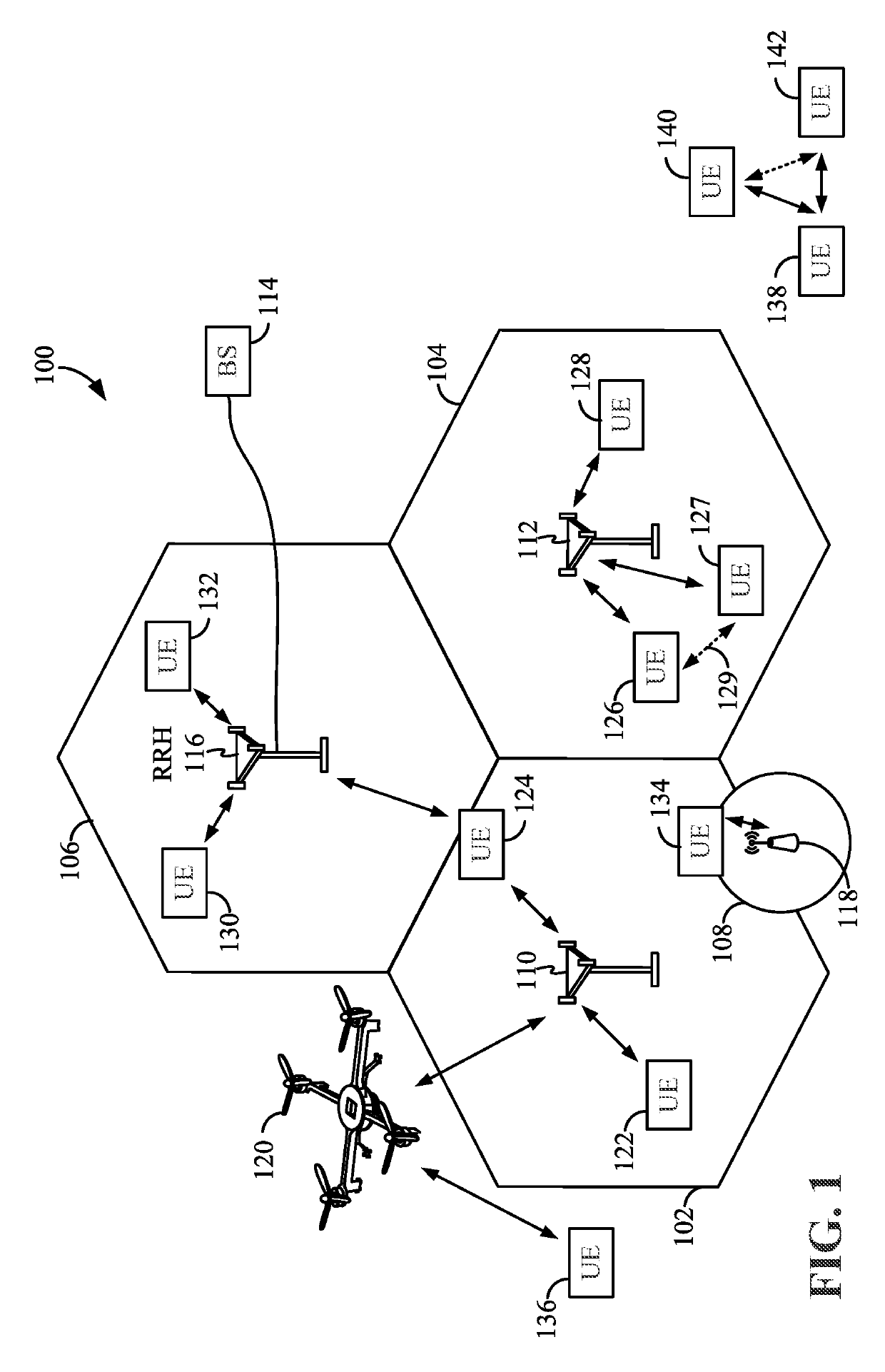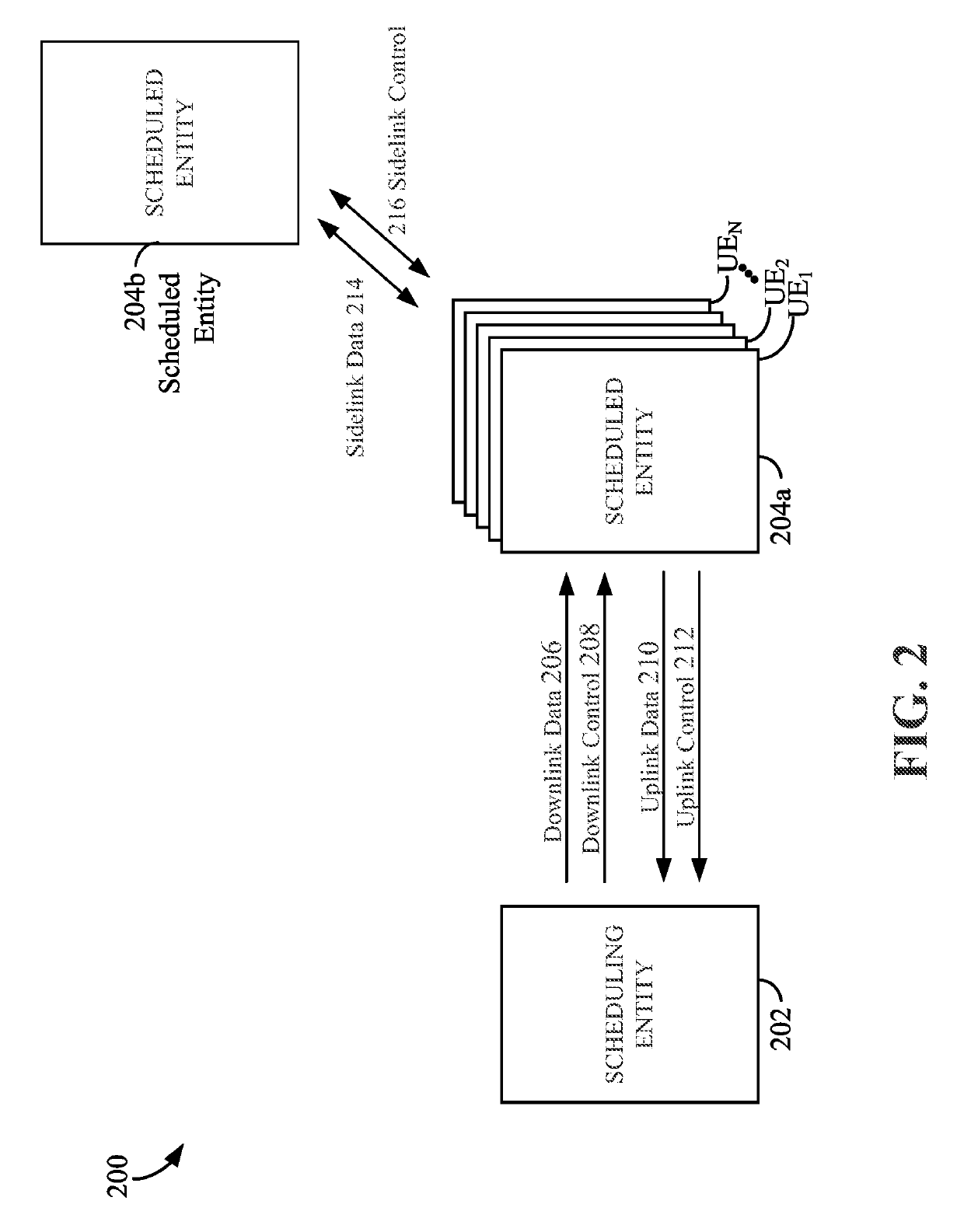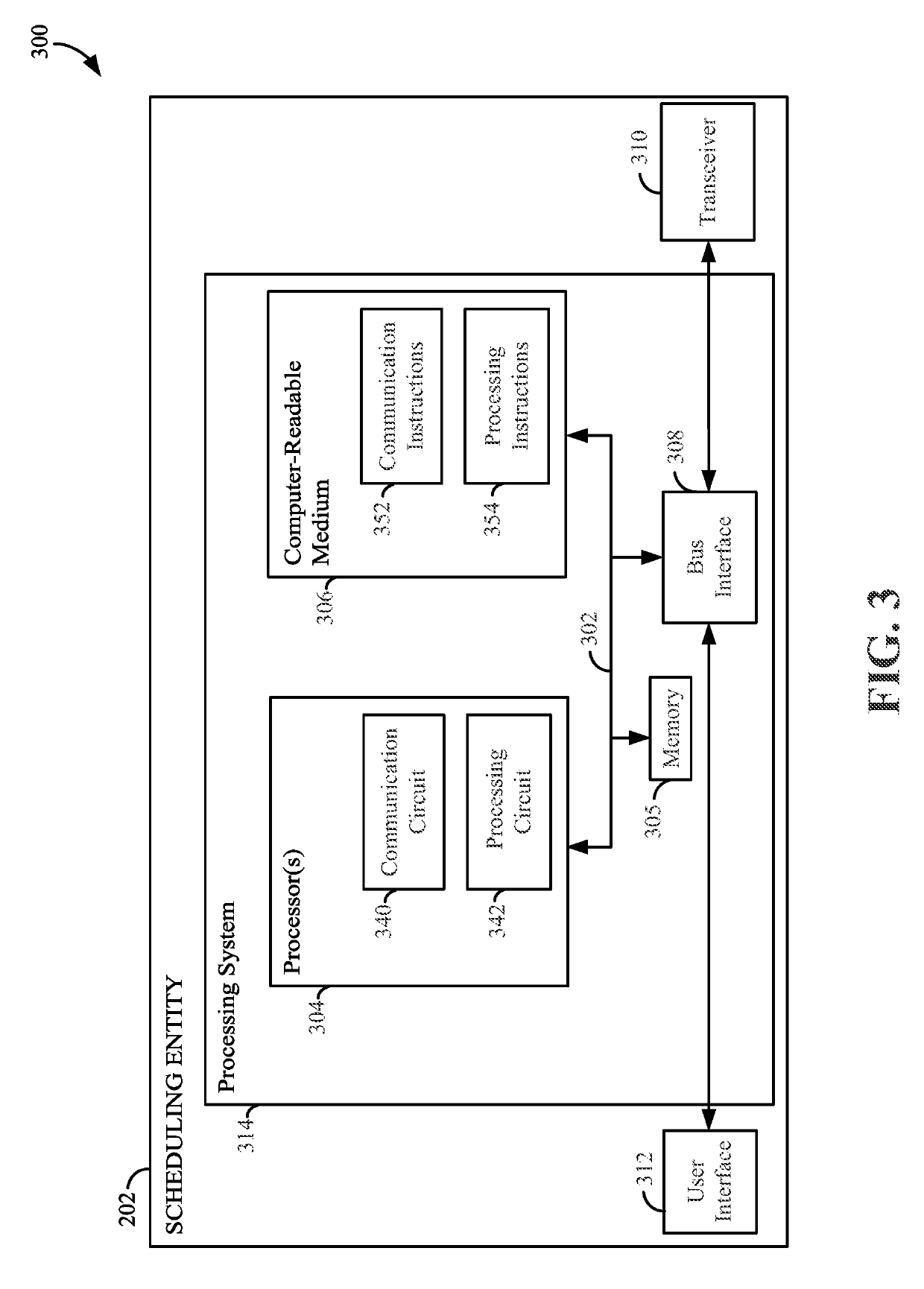Clear-to-send (CTS) power control in sidelink
a power control and sidelink technology, applied in power management, high-level techniques, mesh networks, etc., can solve problems such as ue-to-ue communications that may potentially interfere with enb-to-ue communications and/or other ue-to-ue communications
- Summary
- Abstract
- Description
- Claims
- Application Information
AI Technical Summary
Benefits of technology
Problems solved by technology
Method used
Image
Examples
example a
[0143] Assume an instantaneous CQI is better than an expected CQI (e.g., obtained from a historical record) and there is not much data to transmit. In this case, using less power to transmit data in the data channel in comparison to the power used to transmit an RTS message in the RTS channel, and / or using a lower modulation and coding scheme (MCS) during transmission of data in the data channel in comparison to that used to transmit the RTS message in the RTS channel, can reduce the interference to neighboring links during the time allocated for the data channel.
example b
[0144] Assume a sidelink data transmission will be blocked by a higher priority receiver (e.g., due to TX-yielding as described above) if the data channel power is equal to the RTS channel power. In this case, the sidelink transmitter can choose to reduce its data TX power (i.e., the data channel power) to a certain extent such that it meets a TX-yielding threshold (i.e., not triggering TX-yielding). Consequently, the data transmission of the sidelink transmitter may continue without interfering with the higher priority receiver too much. That is, some interference may occur, but may be at an acceptable level.
[0145]Problems encountered due to implementations of sidelink in which the data channel power and RTS channel power are set to be the same may be overcome, for example, by use of a device with the capability of dynamically determining transmitter power and / or MCS for at least some of the channels being transmitted. In one aspect, the device may use less power in transmission of...
PUM
 Login to View More
Login to View More Abstract
Description
Claims
Application Information
 Login to View More
Login to View More - R&D
- Intellectual Property
- Life Sciences
- Materials
- Tech Scout
- Unparalleled Data Quality
- Higher Quality Content
- 60% Fewer Hallucinations
Browse by: Latest US Patents, China's latest patents, Technical Efficacy Thesaurus, Application Domain, Technology Topic, Popular Technical Reports.
© 2025 PatSnap. All rights reserved.Legal|Privacy policy|Modern Slavery Act Transparency Statement|Sitemap|About US| Contact US: help@patsnap.com



